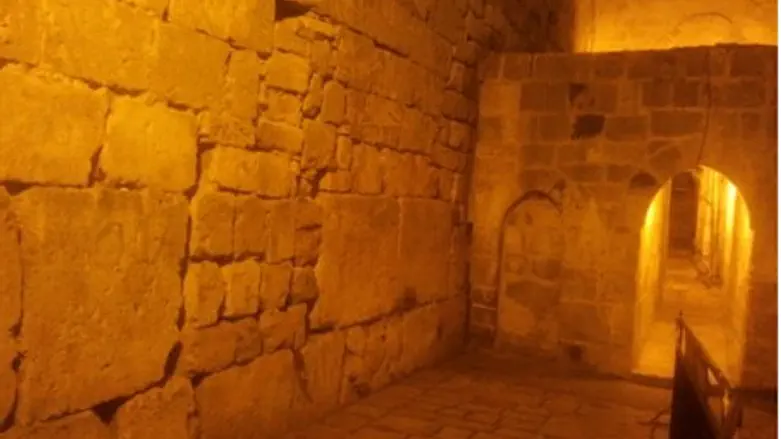
Attorney Dr. Shmuel Berkowitz, an expert on Jerusalem and the holy places, rejected on Thursday statements made this week by members of the Knesset Interior Committee, that the “Small Western Wall” (Hakotel Hakatan) in Jerusalem is being neglected because it is not included in Israel’s Holy Places Act.
Members of the committee visited the site, an extension of the Western Wall that is accessible through the Muslim Quarter of the Old City, and the committee’s chairwoman, MK Miri Regev (Likud) demanded afterwards that the site be upgraded and cleaned up.
The Western Wall is a supporting wall of the Temple Mount complex, the holiest site in Judaism on which the two Holy Temples were built approximately 2,850 and 2,350 years ago, respectively.
Of the nearly 500 meters of length of the Western Wall, roughly 200 meters of the southern end [to the right of the worshipers] are easily accessible today - but the remainder is just as sacred. Another 100 meters or so are included in a tour of the Western Wall Tunnels. Above these tunnels, near the Iron Gate entrance to the Temple Mount and on Temple Mount floor level, is an open area facing a short segment of the Wall. This is the area known as the Kotel HaKatan, or "Small Kotel".
Though it is off the beaten track, the Kotel HaKatan is actually slightly more holy than the familiar Western Wall plaza, because of its closer proximity to the Holy of Holies of the ancient Temples. However, one would not know this upon visiting it as it is hard to get to, has no trappings of a holy site, and is not even protected 24 hours a day.
According to Dr. Berkowitz, the Small Kotel is a direct continuation of the Western Wall and as such is undoubtedly included in the Protection of Holy Places Law.
"Most of the Western Wall is located inside the Muslim Quarter and the exposed part is the Small Kotel with a small plaza. There is no doubt that it is a holy place for Jews because it is part of the Western Wall that was declared a holy place in the Protection of Holy Places Law,” he told Arutz Sheva.
Dr. Berkowitz further said that the High Court has previously ruled that the sanctity of a place is independent from its definition in the law.
"The Temple Mount and the Church of the Holy Sepulchre are not mentioned in the regulations and obviously they are considered holy places,” he said. “Everyone acknowledges the sanctity of the Small Kotel and the City of Jerusalem has already put up a sign saying that it is a sacred site."
Dr. Berkowitz continued, “The trouble is that the site is neglected because it is located in the heart of the Muslim Quarter and it is hard to protect it. The Small Kotel until recently was in terrible condition, there were garbage cans all over the place, Arabs urinated there, there were no ushers or monitors.”
The Small Kotel, he noted, "is a place where Jews have been praying for years. The Ministry of Religious Services must place inspectors there to ensure that the Arabs do not disgrace the site. The police have increased security in the area and should be thanked for that, but benches and prayer books should be placed and the sanctity of the site be maintained.”